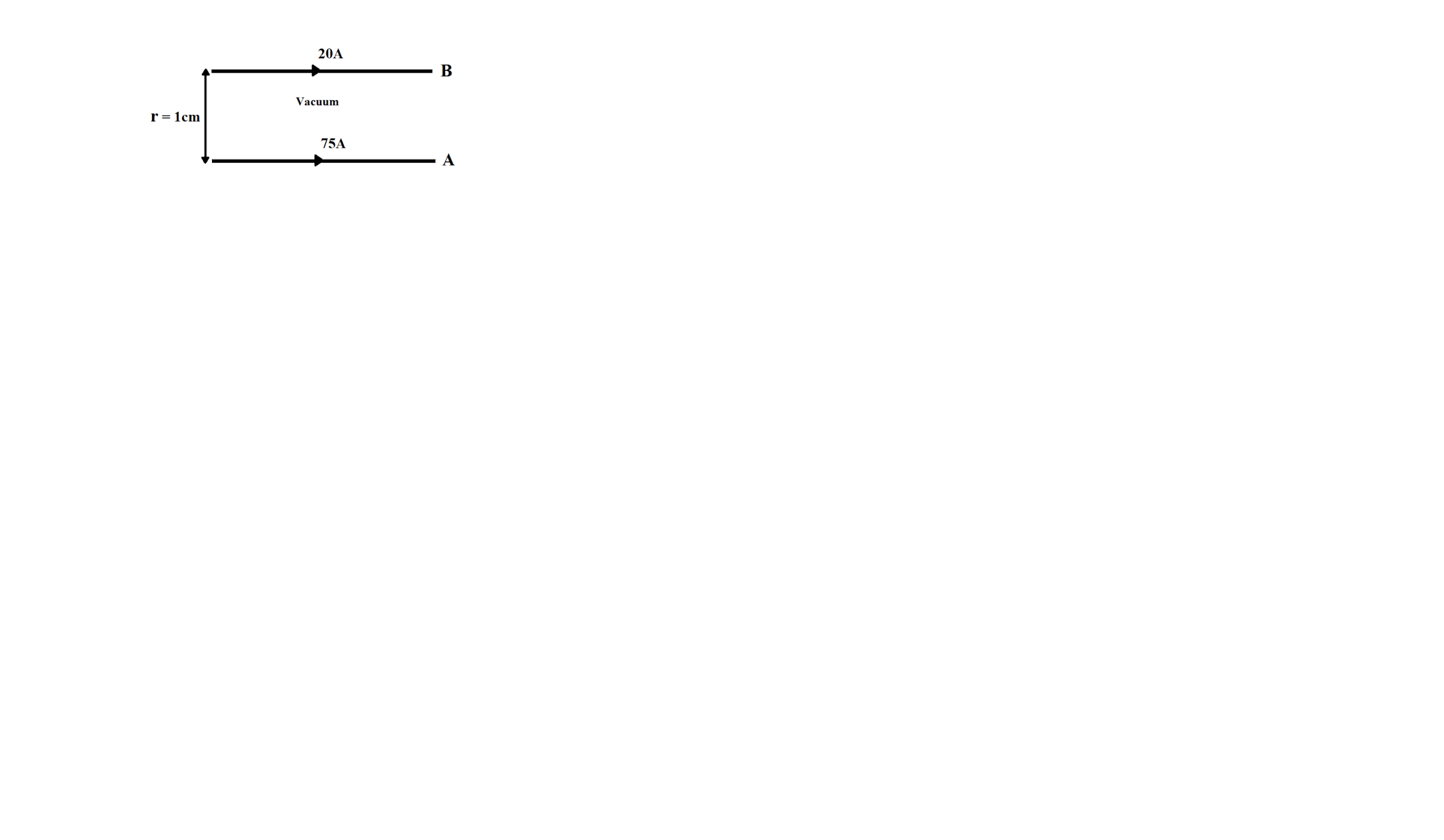Question
Question: Calculate force per unit length acting on the wire B due to the current flowing in the wire A. ![]...
Calculate force per unit length acting on the wire B due to the current flowing in the wire A.

Solution
When a current carrying wire is placed in a magnetic field, magnetic force is exerted on the wire by a magnetic field, which is a type of mechanical force that has the tendency to move the wire in the field. We will use the expression for magnetic force on a wire placed in a uniform magnetic field to calculate the force per unit length of the wire.
Complete step by step answer:
Magnetic field is a vector field, or pseudo vector field, that describes the magnetic influence or impact of electric charges in relative motion with each other and effect of magnetized materials. A charge moving parallel to a current of other charges experiences a force perpendicular to its own velocity. We can say that the magnetic field is the area around a magnet in which there is presence of magnetic force. Magnetic field is a type of field that passes through space and which makes a magnetic force move electric charges and magnetic dipoles.
We are given two wires carrying different current in the same direction. Here, we can assume that one wire is kept in the magnetic field of another wire which results in the generation of magnetic force experienced by the wire.
Expression for magnetic force on a current carrying wire of length l carrying a current I and placed in a uniform magnetic field of strength B:
FB=Il×B
I is the magnitude of current in wire
l is the length of wire
B is the magnitude of magnetic field
Magnitude of magnetic force experienced by the wire:
FB=IlBsinθ
Where,
θ is the angle between length of wire and the magnetic field
Magnitude of magnetic force experienced by the wire per unit length of the wire:
FB (per unit length)=IBsinθ
Magnitude of magnetic force per unit length of wire,
FB=IBsinθ
Where,
I is the magnitude of current in wire
l is the length of wire
B is the magnitude of magnetic field
θ is the angle between length of wire and the magnetic field
Let us consider the field produced by wire 1(wire A) is B1 and the force it exerts on wire 2(wire B) is F2. The field due to I1 at a distance r is:
B1=2πrμoI1
In this case, the angle θ is 90∘
The magnetic force experienced by wire 2(wire B) will be,
F2=I2lB1
Therefore,
F2=2πrμoI1I2l
Force per unit length of the wire 2(wire B),
lF2=2πrμoI1I2
Putting values,
μo=4π×10−7I1=IA=75AI2=IB=20Ar=1cm=0.01m
We get,
lF2=2×722×0.014π×10−7×75×20lF2=0.03Nm−1
The force per unit length acting on the wire B due to the current flowing in the wire A is 0.03Nm−1.
Note:
Magnitude of magnetic force experienced by the wire placed in uniform magnetic field of another wire:
FB=2πrμoI1I2l
Magnitude of magnetic force on a current carrying wire placed in magnetic field of another wire depends upon:
(i). Current passing through both the wires
(ii). Length of the wire
(iii). Distance between the two wires
